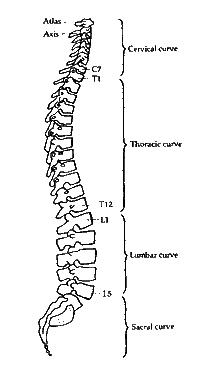If you have ever had an aching back, stiff neck, tennis elbow, 'gammy' knee or some such affliction of the body, then the chances are that you have sought the help of, or have been advised by someone to go to, an osteopath for relief. If, however, you have, or have had, a more serious health problem such as asthma, migraine headaches, angina pains, digestive disturbances (to name but a few examples), then it has probably not occurred to you that the condition might have some of its origins in a dysfunction of some mechanical component of the body, the musculo-skeletal system. You would, therefore, probably not have taken such a problem to an osteopath practitioner. Surprising as it may seem, many such 'illnesses' are often the end result of biomechanical changes in the structure of the body which are amenable to osteopathic treatment. This theme will be elaborated on in later chapters, and some of the fascinating research that has been done in a wide range of health problems will be detailed. At this stage, the idea of osteopathy offering help to conditions other than the more obvious aches and pains may seem a strange one. In order to understand the concept of osteopathy, and what its real potentials are, it is necessary to examine its roots and subsequent development.
Osteopathy is a system of health care which recognizes that the self-healing, self-regulating ability of the body is dependent upon a number of factors, including favourable environmental conditions (internal and external), adequate nutrition and normal structural integrity. It utilizes generally accepted methods of diagnosis, as well as certain specialised ones developed to facilitate accurate structural assessment. It places special emphasis upon the importance of body mechanics, and uses manipulative techniques to detect and correct, faulty structure and function.
In many people's minds, especially in the U.K., osteopathy is equated mainly with the treatment of spinal and other joint pains and problems. This limited care concept is largely an historical accident. As indicated above, the osteopathic profession sees itself as being relevant to a wide range of health problems, and not simply limited to the treatment of musculo-skeletal derangements.
Since the turn of the century, when the first American-trained osteopaths established themselves in practice in the U.K., they have filled a gap that existed (and to a large extent still exists) in medical practice. Doctors tended to regard musculo-skeletal problems as relatively unimportant, and manipulation as, at best, an unknown quantity and, at worst, valueless.
 |
Side view of a normal spine showing the natural curves. |
In the U.S.A., the gradual evolution of osteopathy has been towards its original goal of providing a complete health-care system, dealing with all of man's ailments, and utilizing all those accepted therapeutic methods which coincide with its belief in the necessity for treating the patient as a whole, rather than simply treating symptoms. This concept of treating the 'whole' man deserves closer scrutiny. Disease may be stated to be the result of a disparity between the capacities, resources and responses of the individual, and the demands and circumstances made by his life. Disease can be seen to be a phase in the natural history of the individual, whose unique nature responds to his own particular environment. The individual's inheritance, capacities, resources and demands, and, therefore, his adaptations and responses, are unique to him. Illness, the level of health, predispositions, resistance, responses, adaptations etc. to all the elements of his environment, are a culmination of an individual's life, up to that point. The apparent similarities between diseases in different individuals, and the ability to classify diseases, are testimony to the fact that the body can respond in only a limited number of ways to an infinite variety of events and factors. The patient's illness should, therefore, not be seen to be a disease, or aberration, of an organ or process alone, but as part of an illness in his total being. The patient with angina is not ill because of his angina, but has angina because he is ill. It is consideration of the whole picture of the patient's uniqueness, and his relationship with all his complex environmental factors, that provide the background for the total health care that osteopathy seeks to offer. This, of course, includes consideration of the largest body system, the musculo-skeletal system. The methods of care also include its own distinctive approach to the normalizing of musculo-skeletal dysfunction, osteopathic manipulative therapy (O.M.T.).